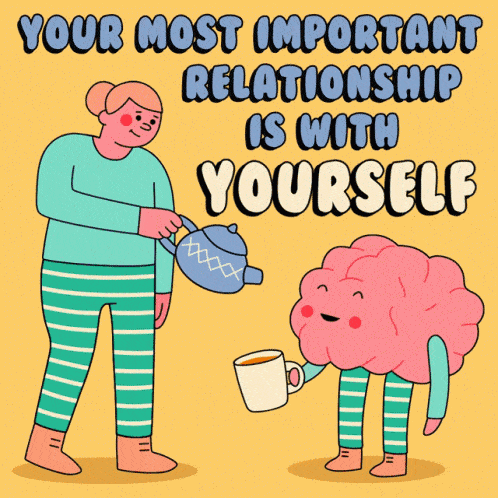Would you panic if you saw that you put on weight?
Advertisement - Scroll to continue
Do you ever feel fat?
Do you have a problem with eating in a company?
Have you had a definite fear of losing control over eating?
Do you have uncontrollable eating binges during which you consume large amounts of food?
Have you had the desire for a totally flat stomach?
Advertisement - Scroll to continue
Do you consume a small amount of food on a regular basis to influence your shape or weight?
How often do you feel uncomfortable seeing your body?
Have you tried to exclude from your diet any foods that you like in order to influence your weight or shape?
How afraid are you of gaining 3 pounds?
How much more or less do you feel you worry about your weight and body shape than other people your age?
Advertisement - Scroll to continue
How dissatisfied have you been with your weight or body shape?
Do you feel depressed and irritable often?
When was the last time you went on a diet?
Compared to other things in your life, how important is your weight to you?
How often do you feel uncomfortable about others seeing your shape or figure?
Advertisement - Scroll to continue
Do your friends tell you that you're thin but you feel fat?
How often do you worry about your weight and body shape?
Have you eaten and then felt guilty because of its impact on your shape or weight?
Has your shape or weight influenced how you think or judge yourself?




Hello. Today we’ll talk about eating disorders. It is a problem that many people struggle with. Eating disorders can occur at any age, but they typically develop in adolescents and young adults. Women are much more affected by the problem. Sometimes these problems are underestimated, while most of them can cause serious, sometimes even fatal complications. What exactly distinguishes eating disorders? What are the characteristics of each of them, and what methods can be used to treat them?
An eating disorder is a mental disorder defined by abnormal eating behaviors that negatively affect a person’s physical or mental health. Only one eating can be diagnosed at a given time. There are many types of them. We can point out binge eating disorder, anorexia nervosa, bulimia nervosa, pica, rumination syndrome, avoidant/restrictive food intake disorder (ARFID), and others. Anxiety disorders, depression, and substance abuse are common among people with eating disorders. These disorders do not include obesity.
Binge eating disorder is an eating disorder characterized by frequent and recurrent binge eating episodes with associated psychological and social problems but without compensatory behaviors.
It is a recently described condition, which was required to distinguish binge eating similar to that seen in bulimia nervosa but without characteristic purging. Individuals diagnosed with bulimia nervosa and binge eating disorder exhibit similar patterns of compulsive overeating, neurobiological features of dysfunctional cognitive control and food addiction, and biological and environmental risk factors. Some professionals consider it milder bulimia with the two conditions on the same spectrum.
Binge eating is one of the most prevalent eating disorders among adults though there tends to be fewer media coverage and research about the disorder.
Anorexia nervosa is an eating disorder characterized by low weight, food restriction, body image disturbance, fear of gaining weight, and an overpowering desire to be thin. Anorexia is a term of Greek origin, translating literally to “a loss of appetite”. The adjective Nervosa indicates the functional and non-organic nature of the disorder. Anorexia nervosa was coined by Gull in 1873. Despite literal translation, the symptom of hunger is frequently present, and the pathological control of this instinct is a source of satisfaction for the patients.
Pica is the eating or craving for things that are not food. It can be a disorder or a sign of other cultural or medical phenomena. The ingested or craved substance may be biological, natural, or manmade. The term was drawn directly from the medieval Latin word for magpie, a bird subject to much folklore regarding its opportunistic feeding behaviors.
According to the Diagnostic and Statistical Manual of Mental Disorders, pica as a standalone eating disorder must persist for more than one month at an age when eating such objects is considered developmentally inappropriate, not part of culturally sanctioned practice, and sufficiently severe to warrant clinical attention. Pica may lead to intoxication in children, which can result in an impairment of both physical and mental development. In addition, it may cause surgical emergencies to address intestinal obstructions and more subtle symptoms such as nutritional deficiencies and parasitosis. Pica has been linked to other mental and emotional disorders. Stressors such as emotional trauma, maternal deprivation, family issues, parental neglect, pregnancy, and a disorganized family structure are risk factors for pica.
Rumination syndrome, or merycism, is a chronic motility disorder. It is characterized by effortless regurgitation of most meals following consumption. It is due to the involuntary contraction of the muscles around the abdomen. There is no retching, nausea, heartburn, odor, or abdominal pain associated with the regurgitation, as there is with typical vomiting. The regurgitated food is undigested. The disorder has been historically documented as affecting only infants, young children, and people with cognitive disabilities. It is increasingly being diagnosed in a higher number of healthy adolescents and adults. There is a lack of awareness of the condition by doctors, patients, and the general public.
Rumination syndrome presents itself in a variety of ways. It has high contrast existing between the presentation of the typical adult sufferer without a mental disability and that of an infant or mentally impaired sufferer. Like related gastrointestinal disorders, rumination can adversely affect normal functioning and the social lives of individuals. It has been linked with depression.
Little comprehensive data regarding rumination syndrome in otherwise healthy individuals exists because most sufferers are private about their illness. They are often misdiagnosed due to the number of symptoms and the clinical similarities between rumination syndrome and other disorders. These symptoms include the acid-induced erosion of the esophagus and enamel, halitosis, malnutrition, severe weight loss, and an unquenchable appetite. Individuals may begin regurgitating within a minute following ingestion, and the full cycle of ingestion and regurgitation can mimic the bingeing and purging of bulimia.
Answer twenty questions in this quiz. They can help you to consider if you have problems with proper nutrition. If so, be sure to see a dietitian. This will help you improve the quality of your life.
